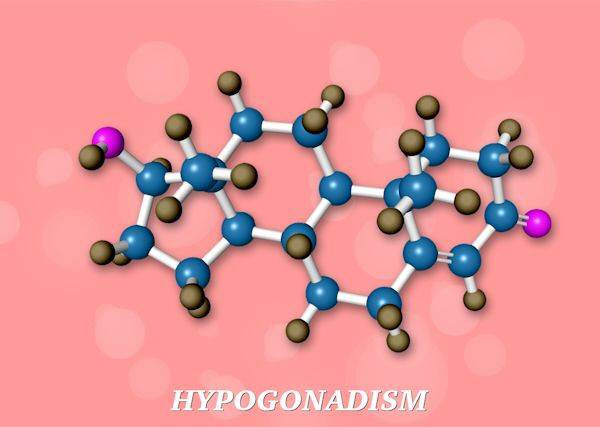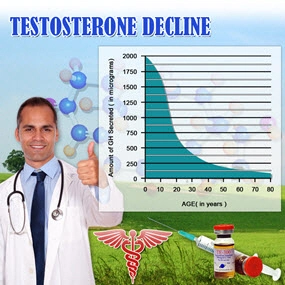Video Link: https://vimeo.com/293026846
Video Download: Click Here To Download Video
Video Stream: Click Here To Stream Video
Video Link: https://vimeo.com/293028005
Video Download: Click Here To Download Video
Video Stream: Click Here To Stream Video
What is Vardenafil?
Vardenafil is one of the three primary Erectile Dysfunction medications available  in the United States and is sold under the brand name Levitra in the United States. In Italy, the product is known as Vivanza, and in India, it is known as Staxyn.
in the United States and is sold under the brand name Levitra in the United States. In Italy, the product is known as Vivanza, and in India, it is known as Staxyn.
How Does Vardenafil Work?
Like its cousins, Sildenafil (Viagra) and Tadalafil (Cialis), Vardenafil is what is known as a PDE5 Inhibitor. PDE5 inhibitors increase blood flow to the penis by encouraging the relaxation of muscles within the organ which restrict blood flow, which leads to an erection.
What Causes an Erection?
To put it simply, an erection occurs when blood flow is encouraged to the penis, and blood outflow is restricted, producing a ballooning effect that leads directly to an erection. Blood vessels leading to the penis, in the Corpus Cavernosum, dilate, which leads blood to enter the penis more quickly, and veins that draw blood away from the penis undergo vasoconstriction.
For this process to take place, a man must experience stimulation, which promotes the erection. When a man experiences stimulation, it encourages the manufacture of nitric oxide by the organ, which then dissipates out through the penis. Nitric oxide is a powerful Vasodilator that encourages an enzyme known as Guanyl Cyclase to secrete cyclic. guanosine monophosphate, also known as cGMP.
CGMP simultaneously promotes vasodilation to the penis and vasoconstriction from the penis, which hardens the penis. PDE5 is the mechanism by which erections dissipate. The longer than an erection persists, the more PDE5 is released, which ends the erection.
What is a PDE5 Inhibitor?
PDE5 is an enzyme that contributes to the restriction of blood vessels in the male penis and selective other areas of the body, such as the retina and the cardiovascular system. PDE5 Inhibitors encourage erections by encouraging blood flow to the penis by allowing cGMP levels to elevate in the penis, which is the mechanism that facilitates the male erection. Many males with Erectile 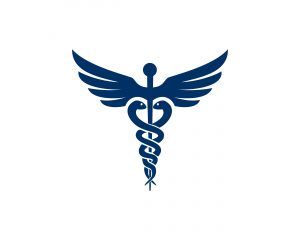 Dysfunction suffer from the condition because their bodies produce too much PDE5, which prevents vasodilation in the corpus cavernosum, structures in the penis which, when filled with blood, directly leads to the male erection.
Dysfunction suffer from the condition because their bodies produce too much PDE5, which prevents vasodilation in the corpus cavernosum, structures in the penis which, when filled with blood, directly leads to the male erection.
The corpus cavernosum is lined with smooth muscle cells, which remain contracted until sufficient sexual stimulation is received, which leads to an erection in men with normal reproductive function. Erectile Dysfunction is also often the result of blood pressure and cardiovascular issues that inhibit proper blood flow, which means that the level of cGMP produced by the body is no longer sufficient to produce a healthy erection without the aid of a medication which promotes blood flow.
The human brain promotes the production of cGMP in direct response to sexual desire and stimulation, which leads to the male erection. This is why drugs like Vardenafil do not lead to a constant erection. They facilitate blood flow in the event of sexual arousal, which allows for healthy sexual activity.
How is Vardenafil (Levitra) Administered?
Vardenafil is an oral medication and was the second oral Erectile Dysfunction treatment approved by the Food and Drug Administration. Viagra (Sildenafil) was the first ED treatment approved, and Cialis (Tadalafil) was the third form approved by the FDA.
What Other Uses May Vardenafil Have?
In addition to its use as an Erectile Dysfunction treatment, there is also some evidence that Vardenafil and its relatives could be used for the treatment of Pulmonary Hypertension. This is a condition in which the blood vessels inside the lungs are not able to efficiently drain blood because of heart failure in the right ventricle. PDE5 is also produced by smooth muscle cells of the arterial wall of the lungs, which contributes to vasoconstriction. It is believed that PDE5 inhibitors may encourage blood flow from the lungs to the heart by promoting vasodilation via the PDE5 pathway.
History of Vardenafil
Vardenafil was initially sold as Levitra by three pharmaceutical companies: Schering-Plough, GlaxoSmithKline, and Bayer Pharmaceuticals. Outside of the United States, Bayer Pharmaceuticals is the sole provider of Levitra in many countries since 2005. In Italy, for example, Vardenafil is sold both by GlaxoSmithKline and Bayer Pharmaceuticals under different brand names, Vivanza by GlaxoSmithKline and Levitra by Bayer Pharmaceuticals. Because of the structure of the European Union Economy and trade rights, soon, Vivanza may be available all across the European Union, which currently only has Levitra available. Of course, both products are the same medication, so this is only a matter of market rights.
Vardenafil is also available in many countries, including Canada and the United States, as a pill which dissolves on the tongue, known as Staxyn.
Medical Use of Vardenafil
Vardenafil has the same side-effects, contraindications, and uses as its relative PDE5 Inhibitors, though its form and function differently. Tadalafil, Sildenafil, and Vardenafil all inhibit the activity of the PDE5 Enzyme and encourage vasodilation through the increased production of cGMP.
Vardenafil is primarily used as an Erectile Dysfunction Treatment to stimulate an erection, but there is evidence that the medication also promotes improved sexual performance and function in other ways. For example, there is clinical evidence that Vardenafil improves the duration of sexual activity using suppressing orgasm in patients that suffer from premature ejaculation.
Levitra, Viagra, and Cialis Comparison
Vardenafil (Levitra) and Sildenafil (Viagra) are very structurally similar. In fact, there are only two molecular differences between the two compounds: Sildenafil has an ethyl group piperazine ring rather than a methyl group, and nitrogen is located in a different structural position. As a result of their distinct similarity, Vardenafil and Sildenafil act very similarly within the human body—Vardenafil just has a slightly faster activation time and provides its benefits for a somewhat more extended period.
Tadalafil (Cialis), on the other hand, has a structurally different composition than both Sildenafil and Levitra. The primary difference between Tadalafil and its relatives is that Tadalafil has a much longer half-life than Sildenafil and Levitra.
Side-Effects of Levitra
Vardenafil (Levitra) shares the most side-effects with Sildenafil and Tadalafil. There are certain side-effects which are specific to Vardenafil, however. Among commonly reported side-effects (more than ten percent of patients) is nausea. Rare Vardenafil side-effects (less than one percent of patients) include itching,  rash, muscle pain, joint pain, elevated heart rate, low blood pressure, facial swelling, eye pain, changes in vision, light sensitivity, back pain, and stomach pain. The majority of symptoms caused by Levitra, Cialis, and Viagra, are side-effects of vasodilation in the genitals and other areas of the body.
rash, muscle pain, joint pain, elevated heart rate, low blood pressure, facial swelling, eye pain, changes in vision, light sensitivity, back pain, and stomach pain. The majority of symptoms caused by Levitra, Cialis, and Viagra, are side-effects of vasodilation in the genitals and other areas of the body.
Very rarely, heart attack can result from the use of Vardenafil, most commonly in patients that are at risk of the condition. Before using Vardenafil or any other PDE5 Inhibitor, it is vital to ensure that the heart is healthy enough for sex to limit this risk.
In the case of Priapism, it is crucial to seek medical help as soon as possible if experiencing the condition, because it can have devastating effects on sexual function if left untreated, including impotence.
Vardenafil, along with its relative medications, also may contribute to the risk of hearing loss. The incidence of this potential side-effect is too low to properly designate causation but high enough that the FDA requires pharmaceutical manufacturers to clearly label the potential risk of deafness associated with Vardenafil, Tadalafil, and Sildenafil.
Vardenafil Drug Interactions
There are certain drugs that patients should not take simultaneously with Vardenafil, or should take with caution. For example, patients that take nitrate medications for angina (chest pain) should not use Vardenafil because both treatments suppress blood pressure to dangerous levels when taken simultaneously. Blood pressure can drop so low when these two medications are taken together that it can put the patient's life at risk.
Vardenafil can lead to changes in heartbeat. Specifically, the medication can make the QT Interval abnormally long. This isn't an issue on its own in the vast majority of cases, but when combined with other medications that are designed to perform the same function, like Amiodarone, it can lead to heart arrhythmia, which can potentially be life-threatening.
How is Levitra Prescribed?
Levitra (Vardenafil) is an empirically orange, round pill that is prescribed in four sizes: 2.5 milligrams, 5 milligrams, 10 milligrams, and 20 milligrams. Both Vardenafil and Sildenafil have a half-life of between four and five hours and 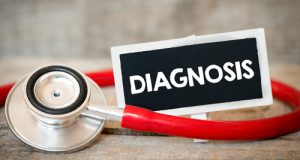 reach peak concentrations between one and two hours after the medication is administered. Vardenafil has a slightly longer duration, but not long enough to be exceptionally notable or for patients to prefer one medication over the other. On the other hand, Tadalafil has a half-life of between 17 and 18 hours, which may lead many patients to prefer Tadalafil over Vardenafil and Sildenafil.
reach peak concentrations between one and two hours after the medication is administered. Vardenafil has a slightly longer duration, but not long enough to be exceptionally notable or for patients to prefer one medication over the other. On the other hand, Tadalafil has a half-life of between 17 and 18 hours, which may lead many patients to prefer Tadalafil over Vardenafil and Sildenafil.
The preliminary dosage for most patients under the age of 65 taking Vardenafil is 10 milligrams, and the dose is adjusted based on the way that the patient interacts with the medication. If the patient experiences side-effects resulting from treatment, the dose may be lowered. If the patient does not respond appropriately to the dosage, the prescribing physician will likely increase the dosage.
Patients that are 65 are generally prescribed a 5-milligram dose initially, due to increased sensitivity to the medication and a comparative increase in risk of side effects.
Vardenafil (Levitra) is a much smaller pill than Sildenafil (Viagra). Vardenafil provides the same benefits as 50 milligrams of Sildenafil at a 10-milligram dosage. Vardenafil is designed to be taken once daily, and taking more can result in unwanted side-effects. Although in the United States, Vardenafil is available in four dosages, in other countries, the selection may be more limited.
Vardenafil Oral Tablet (Staxyn)
Although most patients that use Vardenafil in the United States take the brand-name oral pill Levitra, the medication is also available as a tablet that is intended to dissolve on the tongue. Staxyn is not supposed to be taken with liquid, but can be taken with food.
Staxyn vs. Levitra
Staxyn and Levitra are both the same medication, they are simply delivered via different mechanisms. Levitra is a coated pill, whereas Staxyn is a hydrochloride (HCl) salt. Both Staxyn and Levitra provide the same benefits and have the same activation time of between one and two hours.
The only notable difference between the two medications is that Staxyn is absorbed better by the body and produces equivalent concentrations of Vardenafil in the bloodstream with a lower dose. For example, 10 milligrams of Staxyn provides the same effective amount as 12-14 milligrams of Levitra. Because Staxyn can offer the same benefits with less medication, it is slightly cheaper than Levitra.
One dose of Staxyn (which is only available as 10 milligram) costs around $14 a tablet, whereas Levitra costs more than $18.50 per pill. These prices are subject and bound to change over time, but Staxyn will always be cheaper by the dose than Vardenafil.
Is Vardenafil Available as a Generic Medication?
No. Currently, Vardenafil is only available in the United States as an Oral Pill (Levitra) or Hydrochloride Salt (Staxyn). Bayer pharmaceuticals owns the patent rights for Vardenafil until at least October 21st, 2018.
Can I Get Vardenafil Over the Counter?
No. Vardenafil, in all forms, is only available with a prescription from a licensed and certified medical physician.
How Should Vardenafil be Stored?
Vardenafil has no special storage conditions; it should just be kept at room temperature between 59 and 86 F.
Drugs Which Alter the Activity of Vardenafil
There are several medications which interact with Vardenafil by reducing the metabolism and excretion of Vardenafil, thereby increasing the body's sensitivity to the treatment and also increasing the length of time that the medication stays active in the body. Vardenafil is broken down by the CPY3A4 system in the liver, and any drug that is also metabolized by this enzyme will impact the activity of both drugs. The following are some drugs and products which inhibit the metabolism of Vardenafil:
- Atazanavir
- Ritonavir
- Indinavir
- Itraconazole
- Ketoconazole
- Clarithromycin
- Erythromycin
- Grapefruit Juice
Because of the way that these drugs interact with Vardenafil and increase the concentrations in the bloodstream, Vardenafil should not be combined with these medications. As mentioned earlier, Vardenafil enhances the effects of Nitrate Medications used to treat Angina and other conditions, and should never 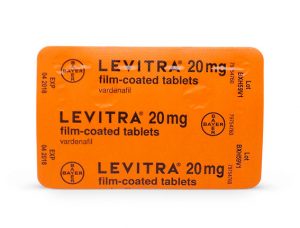 be used together. Patients that experience Angina can take Vardenafil, but can't take Vardenafil and Nitrates within 48 hours of one another. Also, Vardenafil may contribute to the pain associated with Angina by simultaneously reducing blood pressure and speeding up the heart rate.
be used together. Patients that experience Angina can take Vardenafil, but can't take Vardenafil and Nitrates within 48 hours of one another. Also, Vardenafil may contribute to the pain associated with Angina by simultaneously reducing blood pressure and speeding up the heart rate.
As with Nitrate drugs, Vardenafil should not be combined with Alpha-Blockers, because these drugs also reduce blood pressure, which can be amplified when taken at the same time as Vardenafil.
Vardenafil Vs. Testosterone Therapy
Both Testosterone Replacement Therapy and Vardenafil can be used successfully to treat erectile dysfunction. Some patients will respond to one form of treatment more readily than the other. In contrast, some patients benefit best from taking both treatments simultaneously, especially patients that have issues with inhibited libido associated with their erectile dysfunction. A recent study examined the effectiveness of combination Low-T Therapy with Vardenafil, and how effective the treatment was for patients that were not successfully treated by Testosterone alone.
Bio-Identical Testosterone Therapy is very effective at improving sexual function, and over 58% of patients have Erectile Function sufficiently restored with Low-T Treatment alone. However, that leaves around 42% of patients that need further treatment. Levitra, on the other hand, allows about 60% of patients to experience a full sexual experience. This means that there is a considerable overlap of patients that can potentially benefit from both forms of treatment at the same time.
Patients that did not sufficiently respond to Bio-Identical Testosterone alone were more likely to have significantly low Testosterone Levels or were more likely to have other health issues that suppressed erectile function, including hypertension and smoking.
In this study, thirty-four patients that did not respond to Testosterone Therapy about sexual function added Levitra to their therapy. Out of those thirty-four patients, thirty patients found that this combination therapy was successful at restoring their Erectile Function. They also reported that they were happy with the quality of sexual activity. There were no negative symptoms reported.
If I Have Erectile Dysfunction, Should I Turn to Erectile Dysfunction Medications or Testosterone Therapy First?
Which form of treatment is best for you depends on your needs as a patient. In order to be treated most effectively, your prescribing physician needs to perform  blood testing to evaluate your Testosterone Levels. If your Testosterone Levels are low, you should most likely start with Low-T Therapy. On the other hand, if your Testosterone Levels are in the normal range, you'll most likely benefit from Levitra or one of the other PDE5 Inhibitors.
blood testing to evaluate your Testosterone Levels. If your Testosterone Levels are low, you should most likely start with Low-T Therapy. On the other hand, if your Testosterone Levels are in the normal range, you'll most likely benefit from Levitra or one of the other PDE5 Inhibitors.
Of course, if these forms of treatment are inadequate, you can combine treatments in order to restore sexual function. It's also important to note that Low-T Therapy provides a wide variety of other benefits to health and wellness, including improved body composition, bone mineral density, and energy levels, just to name a few.
References:
Combined testosterone and vardenafil treatment for restoring erectile function in hypogonadal patients who failed to respond to testosterone therapy alone:
http://www.ncbi.nlm.nih.gov/pubmed/24251448
Medline Plus: Levitra: >
Vardenafil, Levitra, Staxyn ODT
http://www.medicinenet.com/vardenafil/article.htm
Vardenafil Wiki:
http://en.wikipedia.org/wiki/Vardenafil
Contact Us Today For A Free Consultation

- Tamoxifen Citrate Guide [Last Updated On: January 12th, 2024] [Originally Added On: February 20th, 2020]
- Tadalafil (Cialis) Guide [Last Updated On: July 21st, 2024] [Originally Added On: May 12th, 2020]
- Tamoxifen Citrate [Last Updated On: February 26th, 2024] [Originally Added On: May 19th, 2020]
- Testosterone Cypionate Guide for Treatment of Low T Symptoms [Last Updated On: February 3rd, 2024] [Originally Added On: August 11th, 2020]
- Escitalopram (Lexapro / Cipralex) Guide [Last Updated On: July 22nd, 2024] [Originally Added On: April 8th, 2021]
- Escitalopram (Lexapro / Cipralex) Guide [Last Updated On: November 24th, 2024] [Originally Added On: April 11th, 2021]
- Male Birth Control Gel on the Road to FDA Approval [Last Updated On: July 30th, 2024] [Originally Added On: January 24th, 2022]
- What are Adaptogens and How Can They Help Me? [Last Updated On: October 7th, 2024] [Originally Added On: January 10th, 2023]
Word Count: 2546



